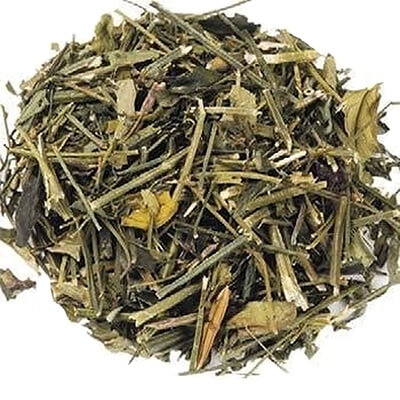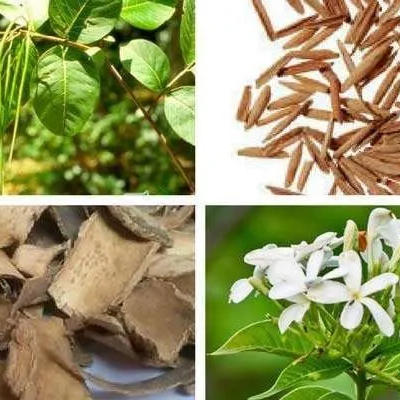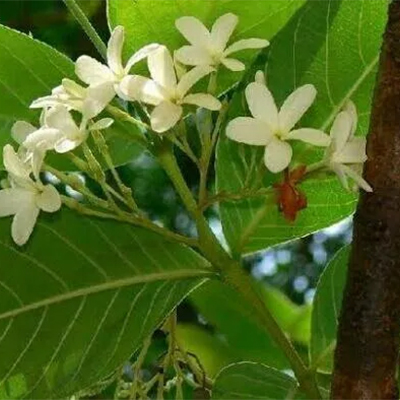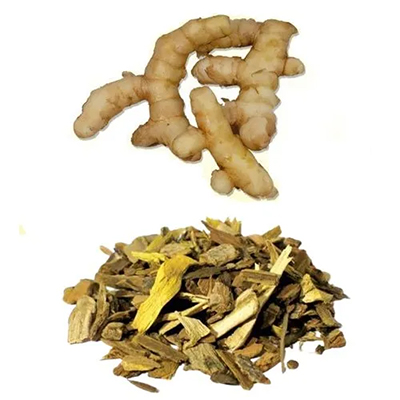On This Page
Kiratatikta (Swertia Chirata) – A Bitter Tonic with Diverse Medicinal Properties
Introduction
Kiratatikta is a critically endangered annual or biennial herb that is popular native to the temperate Himalayas. Kiratatikta is a herb with diverse medicinal properties and it is used by different indigenous population groups in multiple ways. In 1844, Kiratatikta botanically known as Swertia chirayita was first described by Roxburgh under the name Gentiana chyrayta. Kiratatikta is mainly famous for its bitter taste which is due to different active principles like amarogentin, swertiamarin, etc. Kiratatikta is not well recognized in the Indian pharmaceutical codex but is also included in British and American pharmacopeias. Due to its chemical constituents, it exhibits various properties like hypoglycemic, anti-helminthic, anticonvulsant, anti-bacterial properties, etc.
Basonym of Kiratatikta
किरात देशे भवः तिक्त रस:।
It is a herb that grows mainly in the north-eastern region and it has a very bitter taste.
Synonyms of Kiratatikta
- According to habitat:
अनार्यतिक्त: – अनार्य क्षेत्रे किरात देशे भवस्तिकत रस:।
Kirata (Swetia chirayita) is a bitter plant growing in the northeastern region.
किरात: – किरात देशे भवः कीरति रोगानिति च।
It grows in the north-eastern region of India and has the properties of alleviating diseases.
कैरात: – किरात देशे भवः।
It is found in the north-east region of India.
हैमः – हिमवत प्रदेशे भवः।
Kiratatikta is found at high altitudes in Himalaya mountains.
रामसेनक: – रामस्य सेना किराता: तस्या अयाम तदृशे भव इत्यर्थ:।
Kiratatikta grows in the northeastern Himalayan region.
- According to morphology
भूनिंब: – ह्यस्व क्षुप: निम्ब तिक्तश्च।
Kiratatikta is a small herb with a bitter taste like that of neem.
- According to properties and actions
कांड तिक्त – काण्ड तिक्तो अस्य।
Kiratatikta has got a very bitter taste in all of its parts including the stem.
Regional Names of Kiratatikta
- Chirayata, Chiraita, Chireta Kiryat (Hindi)
- Chireta (Bengali)
- Kariyatu, Nilavembu (Gujrati)
- Nelabevu (Kannada)
- Sheduri (Punjabi)
- Shimai – Kichchilik – Kishangu (Tamil)
- Chiretta (English)
- Kiryattu, Nilaveppa (Malayalam)
- Charayatah, Kirait (Marathi)
- Kasabuljarira (Arabic)
- Nainihabandi (Persian)
Botanical Name
Swertia chirata Buch – Ham.
Swertia chirayita Roxb. Ex Flem.
Swertia – The name has been given in memory of Swert – a Dutch botanist.
Chirata – derived from “Kirata” a Sanskrit word.
Family
Gentianaceae (Bhunimbakula)
Ayurveda Reference for Kiratatikta (Swertia Chirayita)
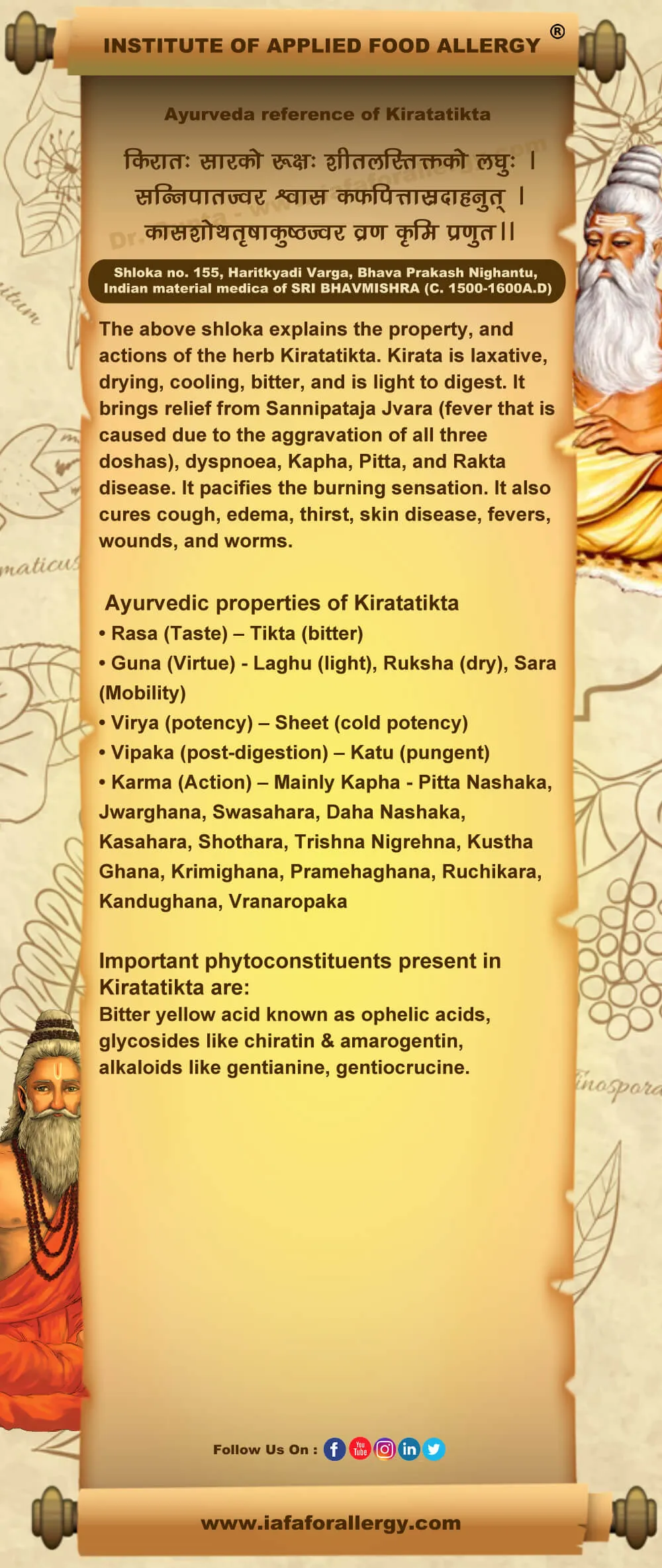
Scientific Classification of Kiratatikta
| Kingdom | Plantae |
| Class | Dicotyledons |
| Subclass | Gamopetalae |
| Series | Bicarpellate |
| Order | Gentianales |
| Family | Gentianaceae |
| Genus | Swertia |
| Species | Chirayita |
Classification of Kiratatikta as per Charaka and Sushruta
- Charaka: Stanya Shodhana Mahakshaya, Trishna Nigrehana Mahakshaya, Tikta Sakandha
- Sushruta: Aargwadhaadi Gana
Kiratatikta’s Description in Brihatrayi
| Charaka | Shusruta | Vagbhata (Ashtang Hridya) |
| C. S. Su. 4/ 18, 29 | S. S. Su. 38/ 5 | A. H. Chi. 1/ 50 |
| C. S. Vi. 7/ 22 | S. S. Su. 45/ 120 | A. H. Ci. 8/ 102 |
| C. S. Vi. 8/ 150 | S. S. Su. 46/ 262, 270 | A. H. Ci. 9/ 62 |
| C. S. Sa. 8/ 87 | S. S. Chi. 9/ 9 | A. H. Ci. 10/ 44 |
| C. S. Chi. 3/ 198, 201, 211, 342 | S. S. Chi. 31/ 5 | A. H. Ci. 19/ 9 |
| C. S. Chi. 4/ 37, 44, 73 | S. S. U. 11/ 15 | A. H. U. 22/ 81 |
| C. S. Chi. 6/ 40 | S. S. U. 39/ 197, 242 | |
| C. S. Chi. 7/ 140, 145 | S. S. U. 44/ 25 | |
| C. S. Chi. 8/ 107 | ||
| C. S. Chi. 14/ 186, 196 | ||
| C. S. Chi. 15/ 127, 137 | ||
| C. S. Chi. 19/ 54, 59 | ||
| C. S. Chi. 21/ 54 | ||
| C. S. Chi. 30/ 259, 264 |
Chirayta Description as Tiktat synonym in Brihatrayi
- A. H. Chi. 10/ 34
- A. H. Chi. 15/ 70
- A. H. U. 2/ 26
External Morphology of Kiratatikta
- Habit: Kiratatikta is a perennial herb, with a robust stem. The stem is 2- 4 feet long and has many branches, terete except near the top.
- Leaves: Leaves of Kiratatikta are simple, opposite, broadly lanceolate, 10cm long, and 4cm wide acute apex.
- Inflorescence: Terminal panicle inflorescence.
- Flower: Greenish yellow with a purple tinge, two glands on each lobe, fringed with long hairs.
- Fruit- Capsule, ovoid, and oblong, 2 – valved with many seeds.
- Seeds: Seeds are minute, compressed, and often winged.
Flowering and fruiting time
The plant is flowering and fruiting in September- November or autumn season.
Varieties of Kiratatikta
Some other species of the genus Swertia have occurrence in the same areas (and also in other localities even lower elevations), where Swertia chirata Buch-Ham. grows in nature (only at suitable altitudinal ranges). Certain species resemble in appearance but they quite differ in taste (bitterness even few species are not bitter rather such species have no bitterness in taste). For the instance, Swertia angustifolia Buch Ham. is also known as Mitha Chirayata. Swertia alata Royle is never bitter. Such species are adulterants and substitute plants that do not replace genuine and bitter Swertia sp. Possessing actual medicinal properties of Kiratatika, though some other species are also medicinal.
Distribution of Kiratatikta
The plant occurs in the eastern temperate Himalayas at 1500-3000 meters altitude. It is found in Uttar Pradesh, Himachal Pradesh, and Kashmir in the region above 4,000- 5,000 ft. Plants grow wild in the Himalayan regions between 1208-3046 meters (4000 – 10,000 ft.) elevations from Kashmir to Bhutan and it is found in nature in Khasi hills at 1204-1525 meters (4,000-5000 ft) in the north-eastern Himalayan region. Some other species of Swertia are found more frequently than Swertia chirata Buch-Ham.
The Useful Part of Kiratatikta
Whole plant
Important Phytoconstituent of Kiratatikta
Bitter yellow acid is known as ophelic acids, glycosides like chiratin & amelogenin, alkaloids like gentianine, and gentiocrucine. Gentiopicrin, chiratol, Kairatenol, pichierenol, swertanone, beta- sitasterol, etc.
Substitute of Kiratatikta
- Swertia purpurascens Wall.
- S. chinensis Franchet.
- S. paniculata Wall.
- S. lawii Burkill.
- S. decussata Nimmo.
- S. affinis C. B. Clarke.
- S. perennis Linn.
- Exacum bicolor Roxb.
- Erythraea roxburghii G. Don.
- Exacum tetragonum Roxb.
- Enicostemma littorale Blume.
Recent Research on Kiratatikta
- Antibacterial Activity
- Antifungal Activity
- Antiviral Activity
- Antioxidant Activity
- Anti-inflammatory Activity
- Hypoglycemic Activity
- Anti-diabetic Activity
- Anti-malarial Activity
- Hepatoprotective Activity
- Anti-leishmanial Activity
- Anti-carcinogenic Activity
- Anthelmintic Activity
- Antipyretic Activity
- Antidiarrheal Activity
- Anti-HIV
- CNS depressant Activity
- Mutagenicity Activity
- Anti-leprosy Activity
- Anticholinergic Activity
- Anti-hepatitis B Virus Activity
- Dyslipidemia
- Gastroprotective Activity
- Wound Healing Activity
Rasa-Panchaka (Properties) of Kiratatikta
| Rasa (Taste) | Tikta (Bitter) |
| Guna (Virtue) | Laghu (Light), Ruksha (Dry), Sara (Mobility) |
| Virya (Potency) | Sheet (Cold Potency) |
| Vipaka (Post-Digestion) | Katu (Pungent) |
| Dosha Karma (action on Dosha) | Mainly Kapha – Pitta Nashaka, Jwarghana, Swasahara, Daha Nashaka, Kasahara, Shothara, Trishna Nigrehna, Kustha Ghana, Krimighana, Pramehaghana, Ruchikara, Kandughana, Vranaropaka |
Prayogarha Vyadhi (Therapeutic Indication) of Kiratatikta
- Jvara
- Kustha
- Kandu
- Parmeha
- Swasa
- Kasa
- Daha
- Krimi
- Vrana
- Aruchi
Aamyik Paryog (Therapeutic Uses) of Kiratatikta
- Jvara (Fever): Hot infusion of Kiratatikta mixed with Dhanyaka leaves alleviates fever immediately. (Siddha Bhaishjya Mannimala.4/3 2)
- Grahaniroga (IBS):
- Kiratadya current. (Charaka Samhita Chikitsa Sthana. 15/ 137- 140)
- Bhuminimbyadi Churna (Charaka Samhita Chikitsa Sthana 15/ 132-133)
- Shotha (Oedema):
- Paste of Kiratatikta and Sunthi destroys edema chronic and caused by three dosas. (Charaka Samhita Chikitsa Sthana. 12/ 42)
- Taking paste of Kiratatikta and Sunthi followed by intake of Punarnava decoction removes generalized edema. (Vrinda Madhava. 39/ 17)
- Satnya Shodhana (For Purifying Breast Milk): For purifying breast milk one should administer decoction of:-
- Katuka
- Guduci, Saptaparna bark, and Sunthi
- Kiratatikta alone.
This is the general treatment of the disorder. (Charaka Samhita Chikitsa Sthana. 30/ 261, 262)
- Pidika (Eruptive boils): Bhunimbadi Kashaya. (Gada Nigreha. 2/ 40- 66)
- Rakta Pitta (Intrinsic hemorrhage): Kiratatikta, Kramuka, Musta, etc. separately mixed with Sandal are beneficial in the disease. (Charaka Samhita Chikitsa Sthana. 4/ 74- 76)
- Grabhini Chardi (Hyperemesis gravidarum): Paste Kiratatikta mixed with an equal quantity of sugar or honey to check vomiting and nausea. (Harita Samhita. 3/ 51-56)
Important Benefits of Kiratatikta
- Worm infestation (Krimi Roga): Recent research revealed anti-parasitic properties of Kiratatikta. Due to this property, Kiratatikta helps to eradicate flukes, tapeworms, roundworms, etc. Along with this Kiratatikta also helps to relieve the symptoms of worm infestation like liver disease, diarrhea, etc.
- Stress, anxiety (Mansika Roga): Kiratatikta produces the chemical constituent swertiamartin, which has an effect on the central nervous system and helps in the treatment of acute stress and anxiety.
- Diabetes (Parmeha): Kiratatikta exhibits anti-diabetic activity by increasing the uptake of glucose by muscle cells and stimulating insulin release.
- Skin disorders (Kshudra Kustha): Kiratatikta is very effective in burning sensation, dry skin, itchy skin, etc. It also helps in curing eczema, acne, skin rashes, etc.
Matra (Therapeutic Administration and Dosage) of Kiratatikta
- Churna (Powder): 1-3 grams
- Kwath (Decoction): 25-50 ml

Have A Health Issue?
Consult Online
- Dr. Sahil Gupta (B.A.M.S., M.H.A.)
Ayurvedic Allergy Specialist
CEO & Founder of IAFA®
Classical Reference of Kiratatikta (Swertia chirata)
Kaiyadeva Nighantu Aushadhiadi Varga, 890, 891
भूनिम्ब: शीतलो रूक्षो रसे तिक्तो लघु: सर: ।।
शीतल: कफपित्तास्त्र कुष्ठमेहापहो हरेत्।
श्वासकासतृषादाहारुचिशोफ ज्वरकृमीन्।।
Bhava Prakasha Nighantu Haritkyaadi Varga, 155
किरात: सारको रूक्ष: शीतलस्तिक्तको लघु: ।
सन्निपातज्वर श्वास कफपित्तास्रदाहनुत् ।
कासशोथतृषाकुष्ठज्वर व्रण कृमि प्रणुत।।
Raja Nighantu, Prabhadradi Varga, 16
भूनिम्बो वातलस्तिक्त: कफ पित्त ज्वरपह:।
व्रण संरोपणो: पथ्य: कुष्ठ कण्डु शोफनुत्॥
Bhava Prakash, Madhayama Khanda , 51/ 39 and Chakradutta, 47/ 18
उपदंश चिकित्सायां भूनिम्बादि क्वाथ: |
Vrindamadhava, 39/ 17 and Chakradutta Shotha Chikitsa, 39/ 21
शोथे भूनिन्बादि क्वाथ
अपहरति नियतमाशु शोथम सर्वाङ्गना नृणाम।।
Chakradutta Visarpa- visphota Chiktsa, 53/ 24 and Gada Nigreha, 2- 40, 16
विस्फोटके विसर्प रोगे भूनिम्बादि कषाय:
Harita Samhita, 3- 51- 6
छर्दि
पीतो भूनिम्बकल्कश्च शर्करासमभागत: ।
छर्दि हरेच्च हत्कलेशं मधुना वा समन्वित:।।
Siddha Bhaishjya Manni Mala, 4- 32 and Charaka Samhita, Chikitsa Sthana, 15/ 132, 133
ज्वर
ननु रामसेनफाण्ट: प्रविरत्न धान्याकदलधान्य: ।
किं कुरुते वैद्यपते ! ज्वरं झटिति जर्जरीकुरुते।।
Charaka Samhita, Chikitsa Sthana, 15/ 137/ 140
ग्रहणी रोगे
भूनिम्बादयम चूर्णम्
किराताद्य चूर्णम्
Charaka Samhita, Chikitsa Sthana, 4/ 74, 76
रक्त पित्त
किराततिकं क्रमुक समुस्तं……।
पृथक पृथक चन्दनयोजितानि तनैव कल्पेन हितानि तत्र।।
Charaka Samhita, Chikitsa Sthana, 30/ 261, 262
स्तन्य शोधन
पाययेताथवा स्तन्यशुद्धये रोहिणी शृतम।
अमृतासप्तपर्ण त्वक् क्वाथे चैव सनागरम।
किराततिकक क्वाथ श्लोक पादेरितान पिबेत।
त्रिनेतान स्तन्य शुद्धि अर्थमिति सामन्य भेषजं।।
Charaka Samhita, Chikitsa Sthana, 12/ 42
शोथे
हन्यात् त्रिदोषंचिरजच्छ शोथं कल्कश्च भूनिम्ब महा औषधस्य।
Vrinda Madhava, 39/ 17
अपहरति नियतमाशु श्वयथु सर्वांग नृणाम।।
Specific Formulation of Kiratatikta
- Kiratatikta Kashaya for Pittasara, Vedna
- Kiratatikta Jeerakadi Vati for Vayukshobha
- Sudarshana Churna for Jwara, Swasa, Kasa
- Kiratadi Taila for Jwara, Shotha
Contraindication and Side Effects of Kiratatikta
Stay on the safe side and avoid the use of Kiratatikta during pregnancy and breastfeeding. Kiratatikta might lower blood glucose levels, so monitor your sugar level carefully if using Kiratatikta as medicine.
Suggestive Reading Regarding Kiratatikta
- Aleem, Abdul & Kabir, Hifzul. (2018). REVIEW ON SWERTIA CHIRATA AS TRADITIONAL USES TO ITS PHYTOCHEMISTRY AND PHARMACOLOGICAL ACTIVITY. Journal of Drug Delivery and Therapeutics. 8. 73-78. 10.22270/jddt. v8i5-s.1957.
- Kumar, Vijay, and Johannes Van Staden. “A Review of Swertia chirayita (Gentianaceae) as a Traditional Medicinal Plant.” Frontiers in pharmacology vol. 6 308. 12 Jan. 2016, doi:10.3389/fphar.2015.00308
- Ahirwal L., Singh S., Dubey M. K., Bharti V., Mehta A. (2014). Investigation of antioxidant potential of methanolic extract of Swertia chirata Buch. Ham. Eur. J. Med. Plants. 4, 1345–1355. 10.9734/EJMP/2014/8933
- Alam K. D., Ali M. S., Mahjabeen S., Hassan M. R., Rahman M. F., Chowdhury R. M. A. A. (2011). Potential hypoglycemic effect of Swertia chirayita—An Indian subcontinent herb with important medicinal value. Pharmacologyonline 2, 642–647.
- Banerjee S., Sur T. P., Das P. C., Sikdar S. (2000). Assessment of the anti-inflammatory effects of Swertia chirata in acute and chronic experimental models in male albino rats. Indian J. Pharmacol. 32, 21–24.
- Bhat G. P., Surolia N. (2001). In vitro antimalarial activity of extracts of three plants used in the traditional medicine of India. Am. J. Trop. Med. Hyg. 65, 304–308.
- Chakravarty A. K., Mukhopadhyay S., Das B. (1991). Swertane triterpenoids from Swertia chirata. Phytochemistry 30, 4087–4092. 10.1016/0031-9422(91)83473-X
- Chaudhuri R. K., Pal A., Jha T. B. (2007). Production of genetically uniform plants from nodal explants of Swertia chirata Buch. Ham. Ex wall- a critically endangered medicinal herb. In Vitro Cell. Dev. Biol. Plant 43, 467–472. 10.1007/s11627-007-9095-9
- Ghosh D., Bandyopadhyay S. S., Chatterjee U. R., Capek P., Ray B. (2012). Carbohydrate polymers of chirata (Swertia chirata) leave structural features, in vitro antioxidant activity, and fluorescence quenching study. Food Sci. Biotechnol. 21, 409–417. 10.1007/s10068-012-0052-y.
References
- Agnivesha, Charaka, Dridhabala . In: Charaka Samhita, ed. Vaidya Jadavaji Trikamji Aacharya., editor. Varanasi: Chaukhamba Sanskrit Sansthan; 2009.
- Sushruta. In: Sushruta Samhita, Sutra Sthana, ed. Vaidya Jadavji Trikamji Acharya., editor. Varanasi: Choukhambha Orientalia; 2005.
- Vagbhata. In: Ashtanga Hrudaya, 9th ed. Anna Moreshwar Kunte, Krishnashastri Navarre, Harishastri, editors. Varanasi: Choukhambha Orientalia; 2005.
- Bhavamishra. In: Bhava Prakasha Nighantu, Haritkyadi Varga 11th ed. part 2. Brahma Shankara Mishra., editor. Varanasi: Choukhambha Bharati Academy; 2009.
- Bhavprakasha, commentary by Bulusu Sitaram, forwarded by K.C.Chunekar
- Sharma PV, Kaideva Nighantu. Aushadhi Varga. Chaukhamba Orientalia, Varanasi; 2006:
- Tripathi I., Raja Nighantu, Prabhadradi Varga, Chaukhamba Krishnadas Academy; Varanasi; 2010
- Dr. Gyanendra Pandey, Dravyaguna Vigyana, reprint 2012, Chwkhamba Krishnadas Academy
- K.niteshwar Dravyagunavigyana, reprint 2017.
- Dr. J.L.N. Sastry and Dr. B.S. Sastry, Dravyaguna Vigyana, Chaukhambha Orientalia, Varanasi.
- Chakrapanidatta, chakradatta with the vaidayaprabhahindi commentary by indradevatripathi, chaukambha sankritasansthan, varanai 2nd Edition, 1994.
- Aleem, Abdul & Kabir, Hifzul. (2018). REVIEW ON SWERTIA CHIRATA AS TRADITIONAL USES TO ITS PHYTOCHEMISTRY AND PHARMACOLOGICAL ACTIVITY. Journal of Drug Delivery and Therapeutics. 8. 73-78. 10.22270/jddt.v 8i5-s.1957.
Ayurveda is an Indian system of medicine that is popular since ancient times. Dr. Gupta’s IAFA® has been conducting research studies to find out different phytoconstituents of herbs and their action in the body. Such knowledge acquired by our experts is used in the preparation of medicines and providing the treatment facilities safely and effectively. IAFA® is the provider of safe and effective treatment for a wide range of diseases, mainly allergic diseases all based on Ayurveda.

